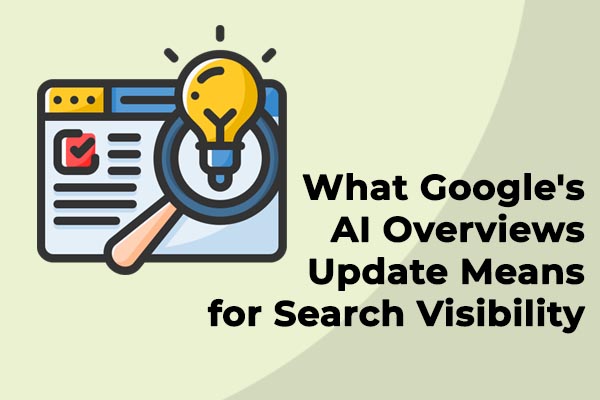Welcome to the digital age where your competitors are gunning for one principal asset: attention share of prospective customers.
If you’re just getting started with establishing a digital presence for your local business, these simple tasks require little to no technical chops and will help get you on your way to attracting new customers online.
It’s time to get noticed.
1. Start With Your Local Listings
I have trouble refraining my bewilderment when I work with owners that do not have a local listing for their business. Think about that last time you looked for a local coffee shop. You likely pulled out a mobile device and typed in “coffee” or “coffee near me” in your favorite map application. What you find is a cluster of red dots representing various businesses that closely relate to your search query, the majority of them located within a reasonable distance from your approximate location.
In 2017, Moz (Seattle-based SEO Organization) released the 2017 Local Search Ranking Factors Survey Results which found “Proximity of Address to the Point of Search” as the number one map pack ranking factor!

I’m not saying you should pack up shop and move across the city to the zip code with the highest population density, but let’s first start by making sure that you’re on that SERP map pack. First, head over to Google Business, create an account and navigate to the home screen. Here, you’ll want to click on the blue plus sign in the bottom right-hand corner to press “Add a location.”

In doing so, you will arrive on this page where you’ll be able to enter your business information including address, phone number, business category, and website URL.

Pay particular attention to the Category section of this form. Try to get as granular with your category selection as possible. The more specific, the less competition you’ll have when local users search for similar businesses.
Next, you’ll want to upload some attractive images of your business. The best practice here would be to include one picture of your brand’s logo and three to five indoor snapshots (Google will likely already have street view images of your business from their mapping inventory). Set one of these images as your “cover” photo and you’re good to go!
2. Up Your Online Review Game
Understanding the role of online reviews and social selling in your sales funnel will play an integral role in the way that you choose to communicate your unique value proposition (UVP) to your customers. While the public’s trust in advertising may be diminishing, a study by Search Engine Land found that “72% of consumers trust online reviews as much as personal recommendations from real people”. This begs the question, why wouldn’t you start asking your best customers for reviews? A recent study found that seven out of 10 customers will leave a review if requested.
Outside of the clear benefits that reviews provide concerning the conversion of prospective customers, it’s important to recognize and understand the discovery-phase SEO benefits that online reviews offer. We’ll look at Google as the primary review channel lever here. However, your prospects will scour reviews from additional providers such as Yelp, TrustPilot, and the Better Business Bureau during their decision-making journey – it depends on your industry. Make sure to do your due diligence in researching how your customers evaluate your competition; a one-channel-fits-all approach may not yield the desired results.
Google Reviews
The search conglomerate has hinted at the importance of positive reviews in the past and recently included an interesting snippet on their local ranking support page which notes “high-quality, positive reviews from your customers will improve your business’s visibility.” This is excellent news for SMB owners because you can now allow your customers to leave meaningful reviews to your business profile in a quick and straight forward manner.
Here’s how it’s done.
In a carefully composed email to your best customers, lead by displaying your appreciation for their business, then shoot the ask. In doing so, you can provide them with a direct link to your business’s Google review page to simplify the process. There are several tools available to help generate this link for you automatically. Here are a few that I use:
Or, create the link yourself with your unique business “Place ID” found here appended at the end of this URL http://search.google.com/local/writereview?placeid=<place_id_here> .
3. Bring Your Phone Number To The Top
Understanding the role of online reviews and social selling in your sales funnel will play an integral role in the way that you choose to communicate your unique value proposition (UVP) to your customers. While the public’s trust in advertising may be diminishing, a study by Search Engine Land found that “72% of consumers trust online reviews as much as personal recommendations from real people”. This begs the question, why wouldn’t you start asking your best customers for reviews? A recent study found that seven out of 10 customers will leave a review if requested.
Outside of the clear benefits that reviews provide concerning the conversion of prospective customers, it’s important to recognize and understand the discovery-phase SEO benefits that online reviews offer. We’ll look at Google as the primary review channel lever here. However, your prospects will scour reviews from additional providers such as Yelp, TrustPilot, and the Better Business Bureau during their decision-making journey – it depends on your industry. Make sure to do your due diligence in researching how your customers evaluate your competition; a one-channel-fits-all approach may not yield the desired results.

Understanding the role of online reviews and social selling in your sales funnel will play an integral role in the way that you choose to communicate your unique value proposition (UVP) to your customers. While the public’s trust in advertising may be diminishing, a study by Search Engine Land found that “72% of consumers trust online reviews as much as personal recommendations from real people”. This begs the question, why wouldn’t you start asking your best customers for reviews? A recent study found that seven out of 10 customers will leave a review if requested.
Outside of the clear benefits that reviews provide concerning the conversion of prospective customers, it’s important to recognize and understand the discovery-phase SEO benefits that online reviews offer. We’ll look at Google as the primary review channel lever here. However, your prospects will scour reviews from additional providers such as Yelp, TrustPilot, and the Better Business Bureau during their decision-making journey – it depends on your industry. Make sure to do your due diligence in researching how your customers evaluate your competition; a one-channel-fits-all approach may not yield the desired results.




Comments are closed.